-

-
Mon-Fri 9:00 to 5:30

 Mon-Fri 9:00 to 5:30
Mon-Fri 9:00 to 5:30
Are you looking for shoe boxes in Pakistan?
In the bustling streets of Pakistan, small businesses and startups thrive on innovation, creativity, and a relentless entrepreneurial spirit. From the narrow alleys of local markets to the vibrant online platforms, these enterprises form the backbone of the nation’s economy. However, amidst the hustle and bustle, one aspect often overlooked is the importance of packaging, especially for businesses in the footwear industry. In this comprehensive guide, we explore why shoe boxes are indispensable for small businesses in Pakistan, how they address customer pain points, and why investing in quality packaging solutions from RoshPack is a cost-effective choice.
Chapter 1: The Journey Begins
Meet Ali, a young entrepreneur with a passion for footwear and a dream of starting his own shoe boutique. With limited resources but boundless enthusiasm, Ali embarked on his entrepreneurial journey, scouring the local markets for unique and stylish shoes to sell to his customers. However, as he delved deeper into the world of small business ownership, Ali soon realized that success lay not only in the quality of his products but also in the presentation and packaging.
Chapter 2: The Importance of Presentation
In a crowded marketplace, first impressions matter. As Ali carefully curated his collection of shoes, he knew that the key to capturing customers’ attention lay in presenting his products in an appealing and professional manner. Enter shoe boxes – the unsung heroes of retail packaging. With their sleek design and customizable features, shoe boxes offered Ali the perfect solution to elevate his brand and create a memorable unboxing experience for his customers.
Chapter 3: Addressing Customer Pain Points
As Ali’s business began to grow, he encountered several pain points that threatened to hinder his progress. From concerns about product protection during transit to the need for a cost-effective packaging solution that didn’t require large upfront investments, Ali faced numerous challenges on his path to success. Fortunately, RoshPack’s shoe boxes offered a solution to each of these pain points.
Chapter 4: The RoshPack Advantage
RoshPack’s shoe boxes are designed with small businesses like Ali’s in mind. With no minimum order quantity requirements, Ali could order as few or as many boxes as he needed, eliminating the need for large investments in packaging inventory. Additionally, RoshPack’s cost-effective pricing ensured that Ali could access high-quality packaging solutions without breaking the bank, allowing him to allocate his resources more efficiently.
Chapter 5: A Sustainable Solution
Beyond affordability and convenience, RoshPack’s shoe boxes also offered Ali a sustainable packaging solution that aligned with his values as an environmentally conscious entrepreneur. Made from recycled materials and fully recyclable, these boxes allowed Ali to reduce his environmental footprint while delivering a positive brand message to his customers.
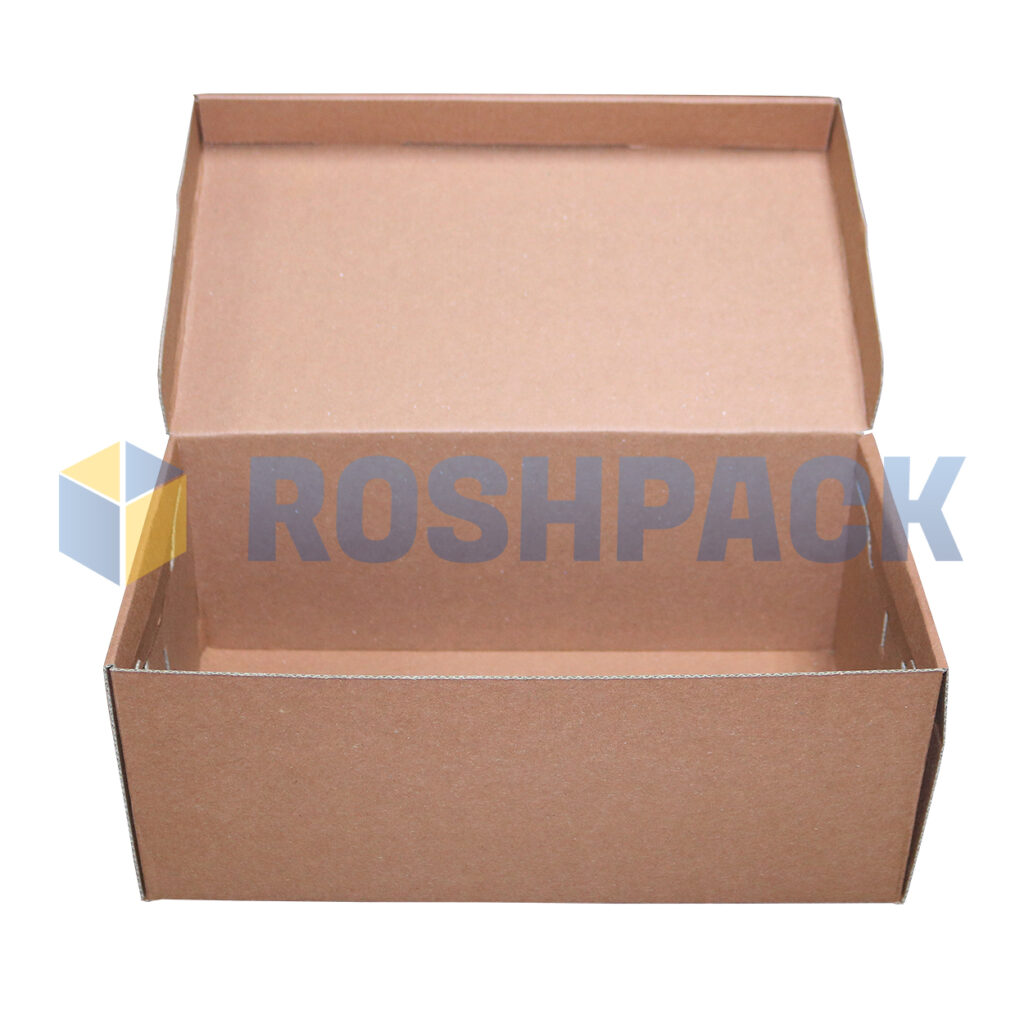
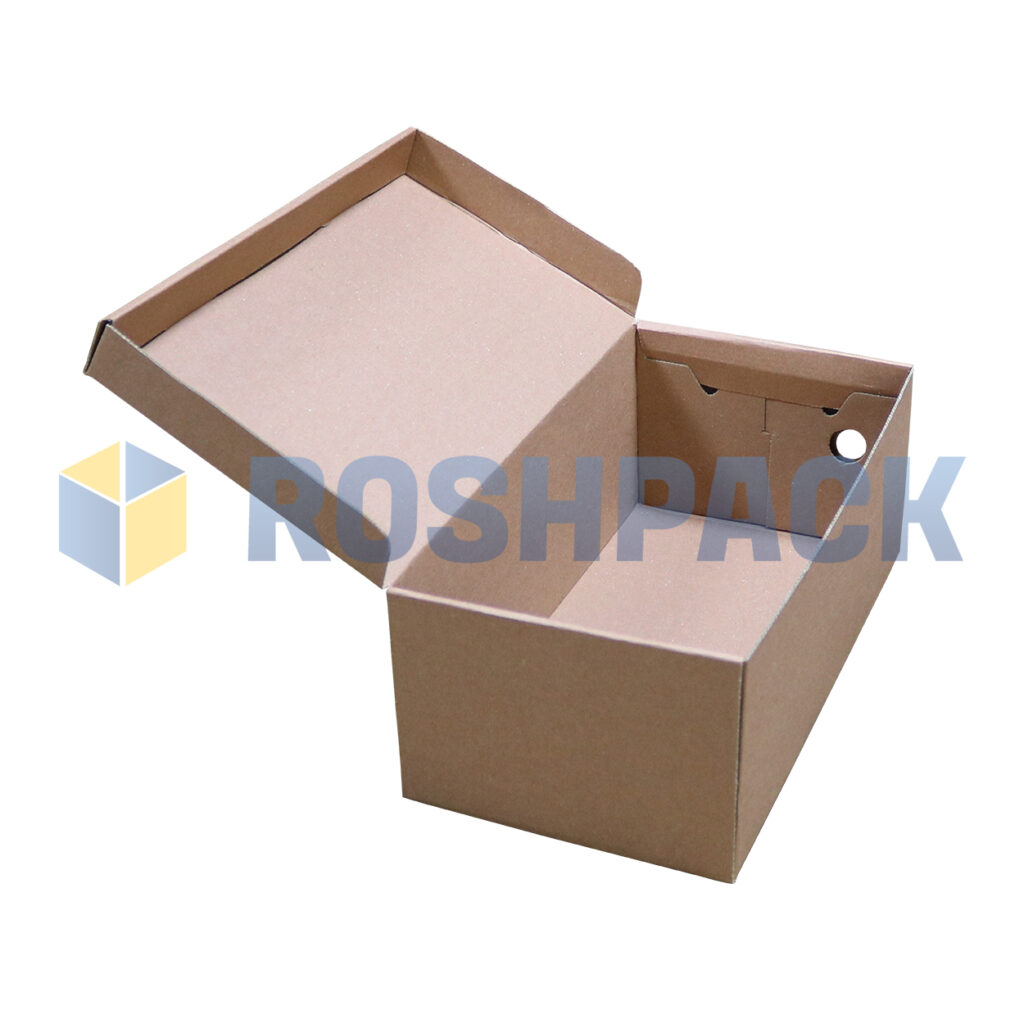
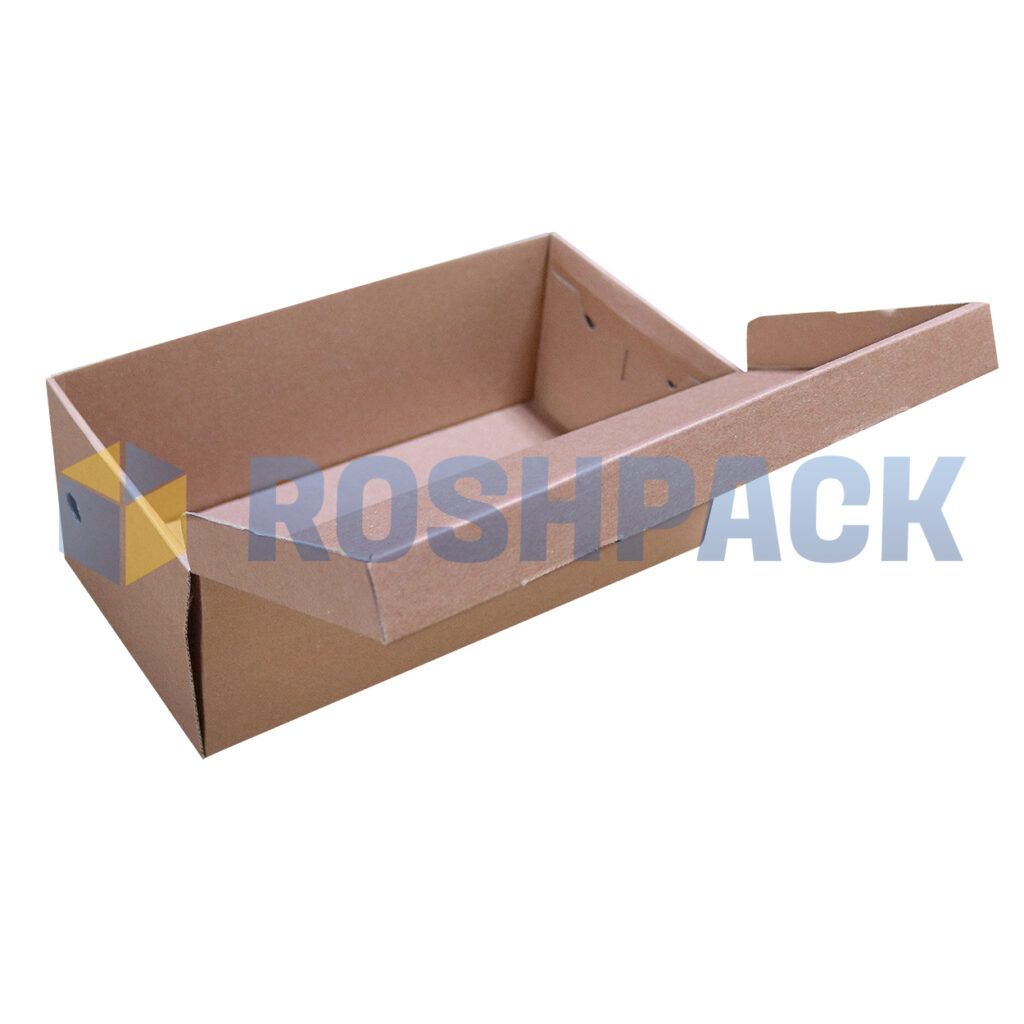
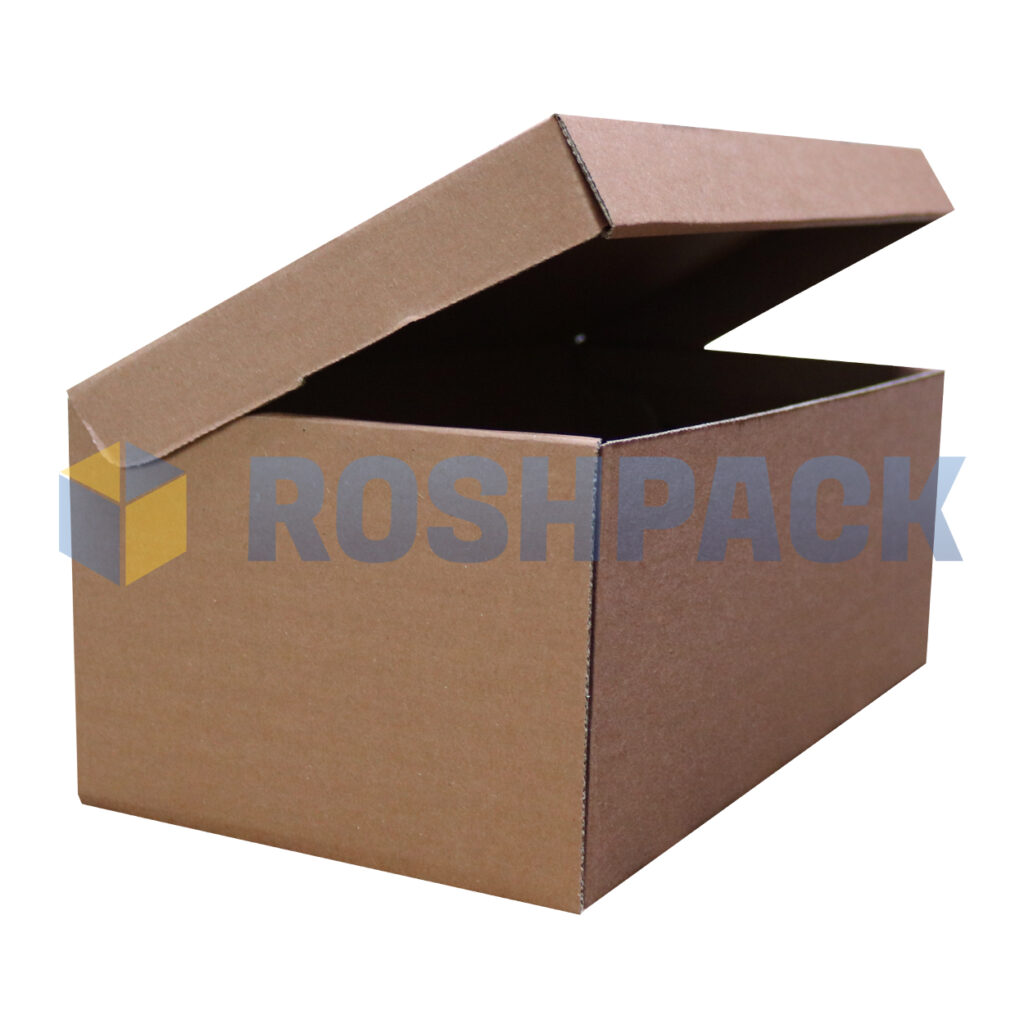
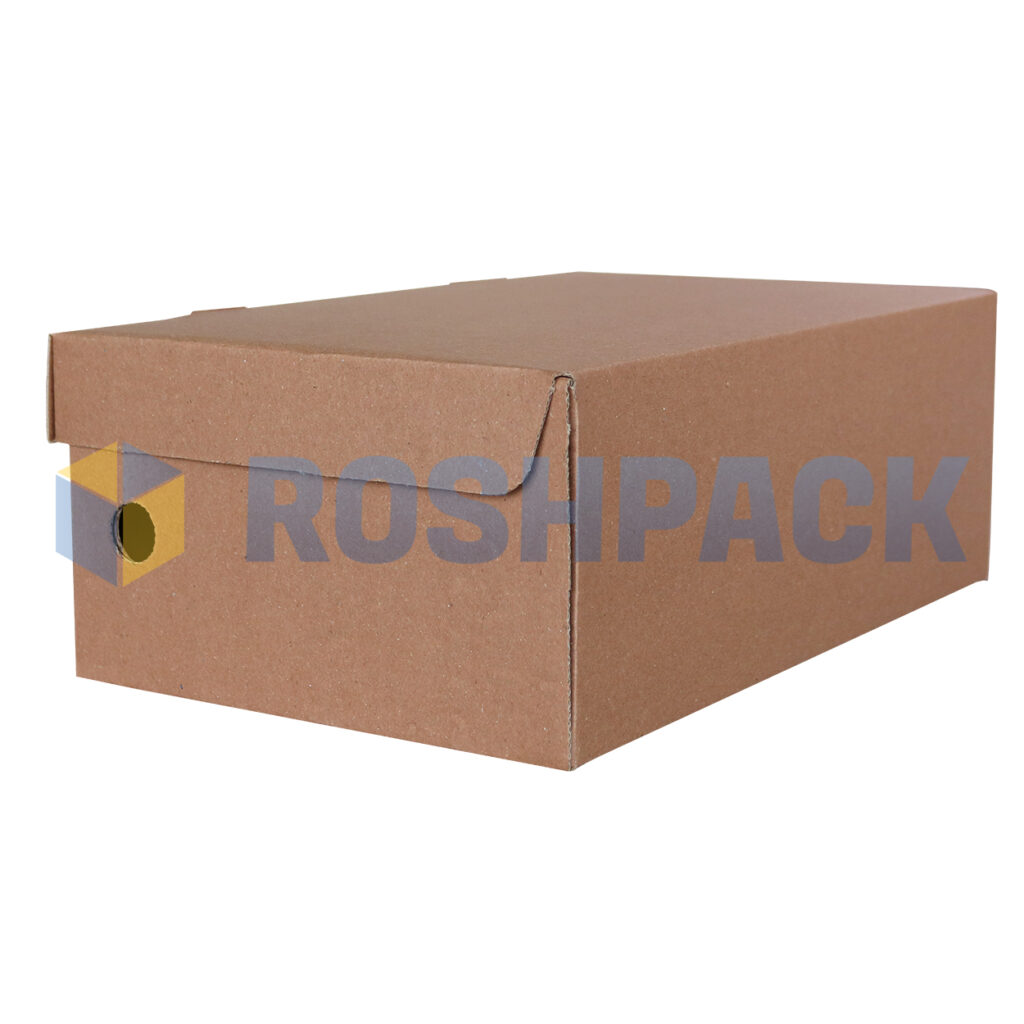
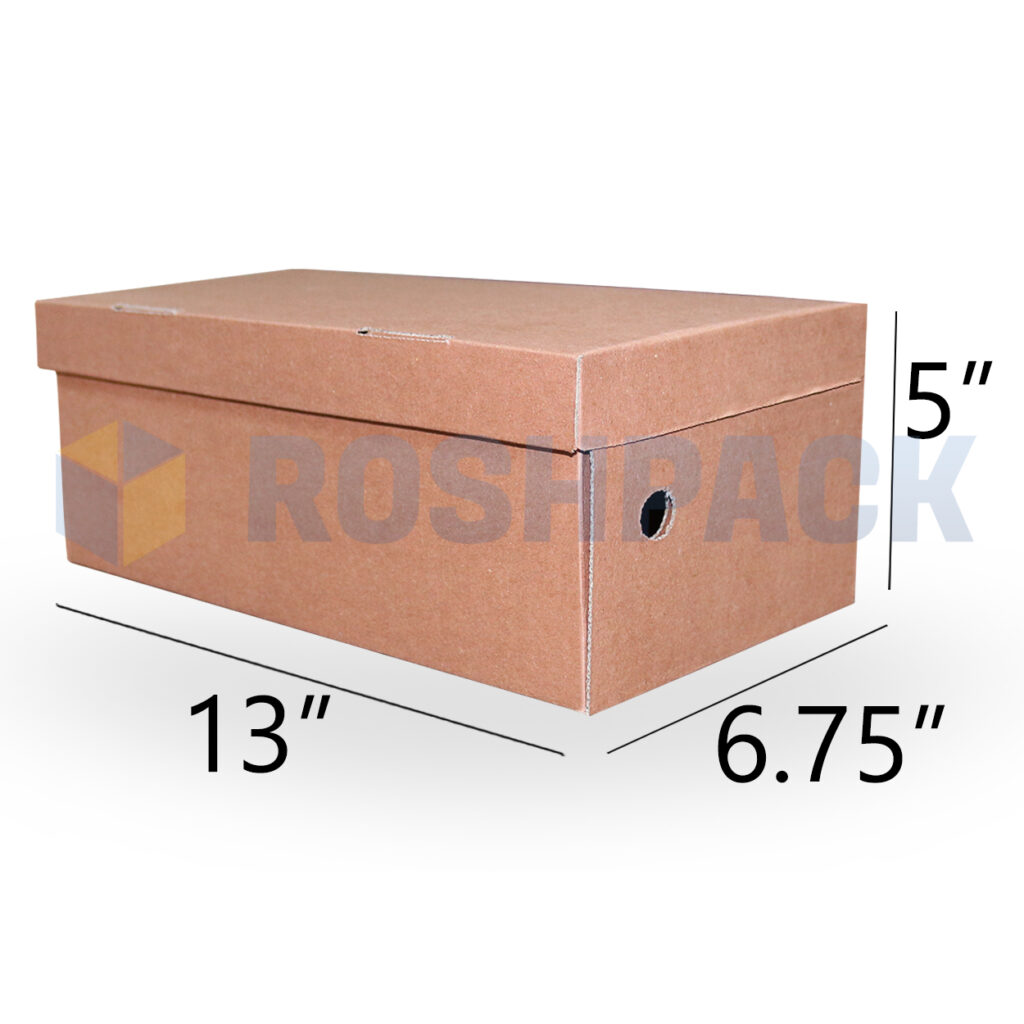
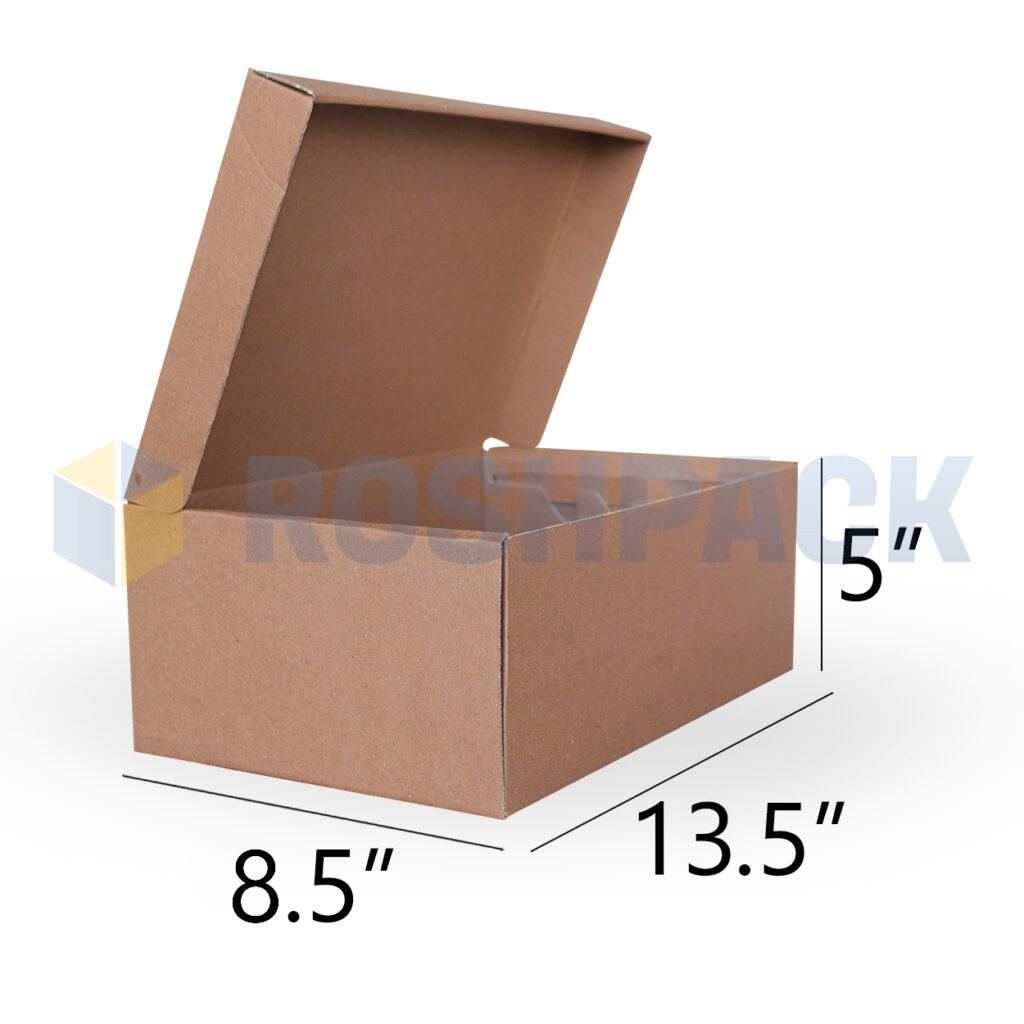
Chapter 6: The Unboxing Experience
As Ali’s business flourished and his customer base grew, he began to receive glowing reviews from satisfied customers who praised not only the quality of his shoes but also the elegance of his packaging. From the moment customers received their orders in RoshPack’s meticulously crafted shoe boxes to the excitement of unboxing and unveiling their new footwear, every step of the journey was enhanced by the thoughtful presentation.
Chapter 7: Looking Ahead
As Ali reflects on his journey from aspiring entrepreneur to successful small business owner, he recognizes the pivotal role that quality packaging played in his success. With RoshPack’s shoe boxes by his side, Ali was able to overcome obstacles, delight customers, and carve out a niche for his brand in Pakistan’s competitive retail landscape. Looking ahead, Ali is excited to continue growing his business, confident in the knowledge that he has a trusted partner in RoshPack to support him every step of the way.
Conclusion:
In the dynamic world of small business ownership, the importance of packaging cannot be overstated. From creating a lasting impression on customers to addressing pain points and streamlining operations, quality packaging solutions like RoshPack’s shoe boxes offer small businesses in Pakistan a competitive edge in the marketplace. With affordability, sustainability, and convenience at their core, these boxes empower entrepreneurs like Ali to pursue their dreams and achieve success on their own terms. Custom shoe boxes are also available for orders over 5000 pieces, choose your size and design!
The Green Revolution in Kinnow Boxes Packaging: Sustainable Solutions for a Healthier PlanetIn an era where environmental consciousness is on the rise, the packaging of products such as kinnows, a type of citrus fruit, is undergoing a significant transformation. This blog post aims to provide an
in-depth exploration of various kinnow packaging options, with a specific focus on eco-friendly kinnow boxes and sustainable fruit packaging solutions. By the end of this article, you will have gained comprehensive insights into these options and their numerous benefits, along with
considerations for their implementation.
Eco-friendly kinnow boxes have been designed with sustainability as their core principle. These packaging solutions prioritize minimizing environmental impact and advocating for responsible farming practices. Let’s delve into their advantages, drawbacks, and the broader implications of adopting these eco-conscious packaging materials.
Eco-friendly kinnow boxes are typically crafted from recycled or biodegradable materials, significantly diminishing the carbon footprint associated with kinnow packaging. They represent a conscious effort to
minimize waste and reduce the consumption of virgin resources, aligning with global sustainability goals.
Consumer Appeal:
Eco-friendly packaging resonates with environmentally-conscious consumers. Brands that opt for these boxes often attract a broader customer base and build trust by showcasing their commitment to sustainability. This consumer appeal can translate into increased sales and brand loyalty.
Customization Possibilities:
Many eco-friendly kinnow boxes offer customizable designs, enabling businesses to effectively showcase their brand and product information. This capability allows companies to maintain strong branding while staying environmentally responsible.
Cost Considerations:
One of the primary drawbacks of eco-friendly packaging materials is their potentially higher cost when compared to traditional options. While this may impact a business’s packaging budget, it’s crucial to view this as an investment in environmental responsibility, which can lead to long-term benefits.
Limited Availability:
The availability of eco-friendly packaging materials can vary significantly based on geographic regions and markets. In certain areas, sourcing suitable options may require additional effort, potentially leading to logistical challenges.
Durability Concerns:
Some eco-friendly materials may exhibit lower durability compared to conventional packaging materials. This can raise concerns, particularly for businesses involved in shipping delicate or heavy kinnow shipments. Proper consideration and testing are essential to ensure that the chosen eco-friendly materials can adequately protect the products during transit
and storage.
Sustainable fruit packaging solutions aim to revolutionize the way kinnows and other fruits are packaged,
with the primary goal of reducing waste and minimizing environmental impact.
Let’s delve into the numerous advantages, potential drawbacks, and the broader implications of adopting sustainable fruit packaging materials.
Reduction of Plastic Use: Sustainable packaging solutions prioritize reducing or eliminating the use of plastic materials, contributing significantly to the global effort to reduce plastic waste. This reduction aligns with
sustainability objectives and environmental responsibility.
Innovative Material Choices: Many sustainable packaging options leverage innovative materials such as bamboo, paper, or plant-based plastics, providing a wide array of choices for businesses. These materials offer a unique opportunity to reduce environmental impact while exploring creative and sustainable packaging solutions.
Alignment with Eco-Friendly Practices: Embracing sustainable fruit packaging aligns businesses with eco-friendly farming practices, emphasizing a holistic approach to environmental responsibility. This alignment can bolster a brand’s image and attract consumers who prioritize sustainable products.
Initial Cost Considerations: Similar to eco-friendly kinnow boxes, the upfront cost of sustainable fruit packaging materials can be higher than traditional options. While this may impact production budgets, businesses should consider the long-term benefits and positive environmental impact.
Customization Challenges: Some sustainable materials may pose limitations in terms of customization and design capabilities. This may require businesses to adapt their branding and packaging strategies to accommodate these limitations.
Consumer Education:
Educating consumers about the benefits of sustainable fruit packaging may require additional effort and resources. Consumer awareness and understanding of sustainable packaging practices can vary, necessitating proactive communication and education initiatives.
The kinnow packaging landscape is continually evolving to meet the demands of a more sustainable and eco-conscious market. Staying informed about these trends is essential for businesses looking to make environmentally responsible choices and cater to the growing demand for sustainable options.
Minimalist Design: Many brands are embracing minimalist packaging designs to reduce waste and emphasize the natural beauty of kinnows. Simple, eco-friendly packaging designs are gaining popularity among environmentally-conscious consumers.
Reusable Packaging: The concept of reusable kinnow packaging is gaining traction. Some brands are introducing containers that customers can repurpose for various purposes, reducing waste and promoting sustainability.
Smart Packaging: Kinnow packaging is becoming more innovative, incorporating technologies such as QR codes for product information and traceability. These innovations enhance the overall consumer experience and can align with sustainable practices.
4. Local Sourcing: Brands are increasingly sourcing packaging materials locally to reduce transportation emissions and support local economies. This trend showcases a commitment to sustainability at multiple levels of the supply chain.
Sustainable kinnow packaging goes hand in hand with sustainable farming practices. It’s essential to highlight how adopting eco-friendly packaging materials aligns with responsible farming methods and supports a comprehensive approach to environmental stewardship.
Reduced Chemical Usage: Sustainable kinnow farming emphasizes reduced pesticide and chemical fertilizer use. This not only benefits the environment but also leads to healthier and safer kinnows for consumers.
Water Conservation:
Sustainable practices often include efficient irrigation methods, reducing water wastage in kinnow orchards. This is especially crucial in regions where water resources are scarce.
Soil Health:
Practices such as crop rotation and organic soil enrichment contribute to soil health and long-term agricultural sustainability.
Educating consumers about the eco-friendly aspects of kinnow packaging is key to building trust and driving demand. Let’s explore strategies for marketing eco-friendly kinnows effectively.
Engage in Eco-Messaging: Utilize digital and social media platforms to share your commitment to eco-friendliness. Share stories about sustainable farming practices and the positive impact of eco-friendly packaging.
Collaborate with Eco-Certifications: Seek certifications like “Organic” or “Eco-Friendly” that resonate with eco-conscious consumers. These certifications can build credibility and trust.
While sustainable packaging may involve initial challenges, it can provide a significant competitive advantage in the kinnow market. Let’s explore how businesses can leverage sustainable packaging for success.
Differentiation:
In a crowded marketplace, sustainable kinnow packaging sets your brand apart. It showcases your commitment to environmental responsibility, which can attract consumers who prioritize sustainability.
Enhanced Brand Image: Sustainability initiatives, including packaging, enhance your brand’s image. It communicates that your brand is forward-thinking and cares about both the product and the planet.
Meeting Regulatory Demands: As environmental regulations become more stringent, adopting sustainable packaging can position your business to meet future requirements proactively.
While the advantages of sustainable kinnow packaging are clear, businesses may encounter challenges during the transition. Let’s address common hurdles and explore solutions:
Cost Management: Mitigate cost concerns by exploring bulk purchasing options for eco-friendly materials. Over time, as demand increases, prices may become more competitive.
Supply Chain Integration: Collaborate with suppliers and partners to ensure a seamless supply chain for eco-friendly materials. Develop relationships with local sources to reduce transportation emissions.
Consumer Education: Invest in consumer education through informative packaging and marketing campaigns. Highlight the environmental benefits and the positive impact of sustainable choices.
Innovation and Research: Keep abreast of innovations in sustainable packaging materials and practices. Stay open to adopting new, more cost-effective, and eco-friendly solutions.
As businesses and consumers increasingly prioritize sustainability, the future of kinnow packaging is undeniably eco-friendly and sustainable. Embracing this shift is not only beneficial but also a moral obligation to protect our planet.
Collaborative Efforts: Businesses, farmers, and consumers must work collaboratively to create a more sustainable kinnow industry. Initiatives like recycling programs and sustainable supply chains can lead the way.
Research and Development: Invest in research and development to discover innovative and cost-effective sustainable packaging solutions. The future holds promising possibilities for eco-friendly materials.
Continuous Improvement: Sustainability is an ongoing journey. Continuously assess and improve your sustainable practices to align with evolving environmental standards and consumer expectations.
Kinnow packaging is indeed undergoing a profound transformation towards sustainability and eco-friendliness. Eco-friendly kinnow boxes and sustainable fruit packaging solutions offer numerous advantages, including reduced environmental impact and enhanced consumer appeal. While they may present initial cost considerations and customization challenges, these are investments in a greener future.
As the kinnow packaging landscape evolves, staying informed about current packaging trends and embracing sustainable practices is essential for businesses. By prioritizing sustainability, companies can not only contribute to environmental conservation, meet the expectations of eco-conscious consumers, and create a better, more sustainable future for the kinnow industry. It’s not just about packaging; it’s about preserving our planet for generations to come.
With this comprehensive guide, you are well-equipped to navigate the changing landscape of kinnow packaging and make informed, sustainable choices for a better tomorrow.
In a world increasingly focused on sustainability and environmental responsibility, the need for eco-friendly packaging options has never been more critical. As consumers become more conscious of their environmental impact, businesses are striving to offer products that align with these values. This blog post will compare and contrast different products and services related to eco-friendly packaging, specifically focusing on recycling cardboard, sustainable packaging solutions, and biodegradable cardboard boxes for a sustainable future. By the end of this article, you’ll have a clear understanding of which option suits your needs best.
Recycling cardboard is one of the most widely adopted practices when it comes to sustainable packaging solutions. Here, we will explore the benefits and limitations of using recycled cardboard.
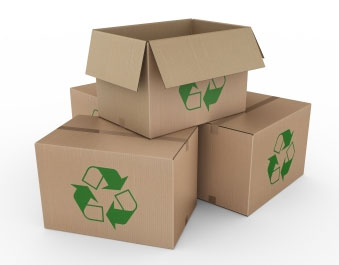
Using recycled cardboard reduces the need for cutting down more trees, conserving natural resources and preventing deforestation. This process plays a crucial role in reducing the environmental footprint of packaging materials.
The production process of recycled cardboard consumes significantly less energy compared to creating new cardboard from raw materials, reducing greenhouse gas emissions. This reduced energy consumption is a significant advantage in terms of environmental impact.
Recycled cardboard is often more affordable, making it an economically sensible choice for businesses looking to go green. Companies can reduce packaging costs while contributing to environmental sustainability.
Many regions and countries have regulations and incentives in place to promote the use of recycled materials, which can benefit businesses that choose recycled cardboard.
Recycled cardboard may not be as sturdy or aesthetically pleasing as new cardboard, which can be a drawback for some businesses. While the quality has improved over the years, it may not be suitable for all packaging needs, particularly for fragile or high-end products.
Customization with recycled cardboard can present challenges due to its pre-existing state. Achieving vibrant colors and intricate designs might be limited when compared to using new cardboard. This limitation stems from the inherent characteristics of recycled materials, which may not offer the same level of flexibility in terms of branding and design elements. Businesses should consider these constraints when opting for recycled cardboard as a packaging solution.
Sustainable packaging solutions encompass a broader range of materials and practices beyond just cardboard for a sustainable future. Let’s delve into the advantages and drawbacks of sustainable packaging options.
Sustainable packaging can be crafted from a variety of eco-friendly materials like bamboo, cornstarch, and hemp, providing businesses with versatile options. This diversity allows companies to choose materials that align with their specific sustainability goals and product requirements.
Using innovative and sustainable materials can enhance a company’s eco-friendly image, attracting environmentally-conscious consumers. Consumers today often prefer brands that actively engage in sustainable practices, making sustainable packaging a valuable branding strategy.
Sustainable packaging materials often have a lower carbon footprint compared to traditional packaging options. This reduction in environmental impact can be a significant selling point for eco-conscious consumers.
Sustainable materials often lend themselves to innovative packaging designs, helping products stand out on the shelf and leave a lasting impression on consumers.
Sustainable packaging, while beneficial for the environment, often comes with a higher price tag than traditional materials. This expense can be a hurdle for businesses, particularly smaller ones with limited budgets. However, it’s essential to view this as an investment in the sustainable future. The long-term cost savings, coupled with the potential for increased sales due to an enhanced brand image, can offset the initial expenditure in sustainable future.
Not all sustainable materials are universally available or suitable for every product. Businesses may need to invest time and effort in researching and sourcing the right materials to align with their specific packaging needs. This limitation can require careful planning and may pose challenges for companies looking to make a swift transition to sustainable options.
Sustainable materials can exhibit varying levels of durability. While some eco-friendly materials match the strength of traditional packaging, others may not be as robust. This diversity can be a concern for businesses that ship delicate or heavy items. Careful consideration is required to ensure that the chosen sustainable materials can adequately protect the products during transit in the sustainable future.
Biodegradable cardboard boxes offer a blend of eco-friendliness and practicality. Let’s explore the pros and cons of this option.
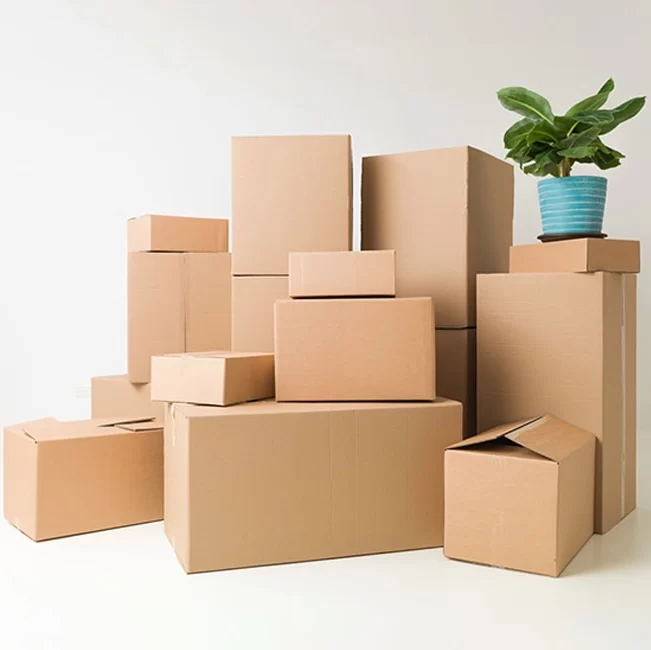
One of the most significant advantages of biodegradable cardboard boxes is their eco-friendliness. These boxes are designed to break down naturally, reducing landfill waste and minimizing harm to the environment. Unlike conventional packaging materials that can persist in landfills for years, biodegradable cardboard boxes decompose into natural substances. This process leaves no lasting impact on ecosystems, making them a responsible choice for businesses committed to environmental sustainability.
Biodegradable cardboard boxes offer a remarkable degree of customization. These boxes can be tailored to suit a business’s branding needs while still adhering to eco-friendly principles. Companies find that they can achieve their desired branding and design elements using biodegradable materials without compromising on aesthetics or functionality. This flexibility allows businesses to maintain a consistent brand image while contributing to their eco-conscious image.
Many consumers actively seek out products with biodegradable packaging, and this growing trend represents a significant marketing advantage for businesses. By using biodegradable materials in their packaging, companies can attract a broader customer base that values environmental sustainability. This consumer appeal can lead to increased sales and brand loyalty, as consumers align themselves with brands that share their commitment to protecting the environment.
In response to the increasing focus on sustainability, several regions and industries have implemented regulations and standards related to packaging materials. Biodegradable cardboard boxes often meet or exceed these requirements, ensuring that businesses remain in compliance with relevant laws and regulations. This compliance not only reduces the risk of legal issues but also demonstrates a commitment to responsible business practices.
Biodegradable cardboard boxes often come at a higher price point compared to their traditional counterparts. This added cost can be a significant concern for businesses, especially those with tight budgets. While adopting biodegradable packaging is an eco-conscious choice, companies must consider the impact on their pricing strategy. It’s crucial to strike a balance between sustainability and cost-effectiveness.
Biodegradable materials, while environmentally friendly, may not possess the same level of sturdiness as conventional cardboard. This disparity in durability can pose challenges, particularly for businesses that ship fragile or heavy items. It’s imperative for companies to conduct thorough assessments to determine whether the durability of biodegradable options aligns with their specific product needs. For some businesses, additional protective measures may be necessary to ensure the safe transit of goods.
The availability of biodegradable packaging materials can vary significantly depending on the region and market. In some areas, sourcing these materials may be straightforward, while in others, it may prove challenging. Businesses looking to embrace biodegradable packaging need to invest time and effort in researching and sourcing the right materials. This limitation requires careful planning to ensure a consistent and reliable supply of biodegradable packaging, which can be especially critical for larger operations.
Biodegradable packaging may not yet be well-understood by all consumers. Businesses need to invest in educating their customers about the benefits of biodegradable materials and their role in environmental conservation. This education and communication process can be time-consuming and require additional resources.
While biodegradable materials break down naturally, the effectiveness of this process can vary based on environmental conditions. It’s crucial for businesses to educate consumers about the proper disposal methods for biodegradable packaging to maximize its environmental benefits. Additionally, businesses must ensure that their packaging is disposed of correctly, potentially requiring coordination with recycling and waste management facilities.
In the quest for eco-friendly packaging solutions, businesses have several choices, each with its own set of advantages and drawbacks. Recycling cardboard is a reliable and cost-effective option, but it may lack customization and quality in some cases. Sustainable packaging solutions offer versatility and a positive brand image but can be costlier. Biodegradable cardboard boxes are eco-friendly and customizable but may be less durable and come at a premium price.
Ultimately, the choice between these options depends on your business’s specific needs, budget, and commitment to sustainability. Whichever option you choose, it’s clear that the demand for eco-friendly packaging solutions is on the rise, and embracing these practices can help your business thrive in an environmentally conscious world for a sustainable future.
As the world continues to prioritize environmental responsibility, the importance of eco-friendly packaging solutions cannot be overstated. By considering the advantages and drawbacks of recycling cardboard, sustainable packaging options, and biodegradable cardboard boxes, businesses can make informed decisions that benefit both their bottom line and the planet. It’s a step toward a sustainable future where packaging plays a vital role in reducing our ecological footprint and preserving the planet for future generations.
